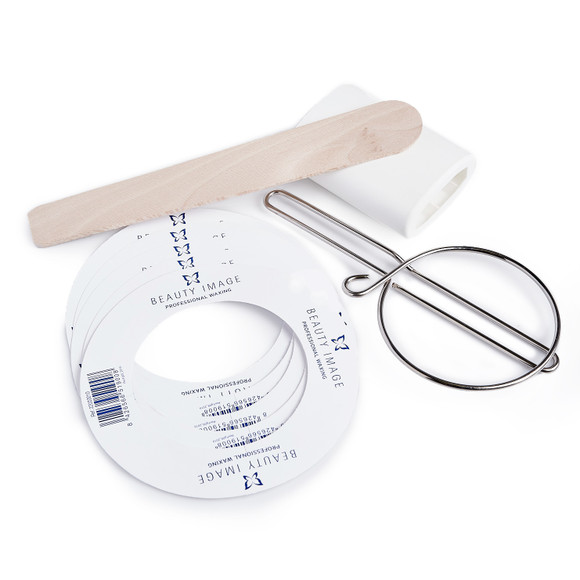Waxing is known to be among the favorite hair removal methods in the world. Indulging in a wax session not only offers a tranquil experience but also guarantees a hair-free body for several weeks. Of course, amazing results are achieved with the best Body WaxingSupplies. Your salon should always be stocked with high-quality products and accessories to meet your client's expectations. Many individuals seek out professional waxing services to reap the benefits that cannot be achieved with a DIY wax treatment.
What is Required for a Successful Wax?
Waxing demands all different types of supplies to make the process smooth and simple. Depending on the treatment, you may give or take the supplies listed below, but you should always be stocked up and ready for whenever they are needed.
The majority of these supplies, however, such as applicators, wax warmers, etc., are essential for any hair removal treatment. They also require the proper care such as disinfecting, and sterilizing all reusable supplies and keeping stock of disposable accessories.
Without further ado, let's review all the essentials you require:
- Wax: Regardless of having the correct preparation, no hair removal session will be effective without high-quality professional waxes. When working with
professional well-formulated body waxes, estheticians can remove hair from most parts
of the body without having to pull too hard on the skin. A salon of any size should always
provide an array of options catering to all body types. Be prepared and have the optimal wax for dry skin, oily skin, mature skin, etc.
Soft waxes are used in larger areas such as arms, legs, and back. You remove the wax from the skin using epilating paper. On the other hand, hard body waxes are used in areas where skin tends to be thinner and delicate, such as the face and the pubic area. Hard wax is applied and removed without using an epilating strip, allowing for more precision for the esthetician.
- Application tools: Most commonly made out of wood, spatulas are used to spread the wax on the skin in even layers. When it comes to hard wax, spatulas can also be used but in this case to help you create a flap to facilitate the pulling of the wax layer later on.
- Gloves: It is essential to keep your gloves on throughout the treatment, starting from when your client is comfortably situated and their skin is uncovered. It is essential to avoid touching your tools or the client's skin with bare hands to ensure the safety of both parties. Doing so increases the risk of spreading germs and bacteria, which can be harmful, especially when the skin is sensitive. Furthermore, touching the client's skin with bare hands can create a negative impression and discourage them from returning to your salon.
- Epilating Strips: High-quality epilating strips are essential for any hair removal treatment involving soft wax. Estheticians' preferences vary in terms of size. Usually, strips are available in different sizes to match all types of hair removal treatments, or in rolls that estheticians can cut to their desired size.
- Wax Warmer: A professional, high-quality wax warmer is an essential part of any hair removal treatment. Melting your wax to the perfect consistency is vital when it comes to successful and efficient hair removal. Wax warmers are incredibly versatile and can be found in different formats to heat different wax products simultaneously, adapting their heating time accordingly in each case. With a professional wax warmer, the likelihood of obtaining the wrong wax consistency is significantly reduced. This allows you to work with greater ease and prevent unnecessary wax wastage.
- Hard Wax Aluminum pot: If you are planning to use hard wax beads for a treatment, it is crucial to have a sturdy aluminum wax pot to melt the wax. These pots are spacious enough to make the process comfortable and hassle-free. The pot comes with a handle and a lid, making it effortless for estheticians to transport it around as needed.
- Pre-depilatories: Pre-depilatories are essential in properly prepping the skin for hair removal. Pre-Depilatory cleanses the skin of impurities such as excess surface oils, lotion residue, and sweat, preparing the skin for optimal hair removal. Removes all the impurities that become attached to the skin throughout the day (sweat, dead skin cells, cosmetics, dust particles, etc.) that would interfere with wax’s adhesion to the skin.
- Post-depilatory Oil, cooling gel, and cool compresses: It's normal for the skin to experience irritation after a hair removal session. Post-depilatory oils enriched with vitamins soothe and nourish the skin to preserve its natural moisture. Gels infused with aloe vera, chamomile, and other natural properties are always a good choice to refresh and condition the skin.
- Antiseptic cream: For a safe treatment, it is essential to use antiseptic cream before and after waxing. Waxing opens up the pores and removes the outer layer of the skin, leaving the follicles susceptible to bacterial infection within the first 24-48 hours following the procedure. Therefore, protecting the skin during the treatment is the most effective way to avoid any complications later on.
Looking for the best waxing supplies for your salon? Beauty
Image helps you stock your business with high-quality wax formulas and the most
sophisticated wax accessories. We've served countless salons and spas in the
U.S. with the best products to satisfy clients at every turn. We also provide a
reliable shipping service and the constant assistance of our reliable hair
removal specialists, so feel free to contact us if you have questions.
If you found this article helpful then let us
know in the comments section below. Likewise, feel free to share it using the
share options below. Want us to cover another topic of your interest about hair removal products? If so, then like us and follow us on social media,
and post to any of our social media profiles the topic you'd like us to
discuss: Facebook @BeautyImageUSA, and Instagram
@beautyimageusa

